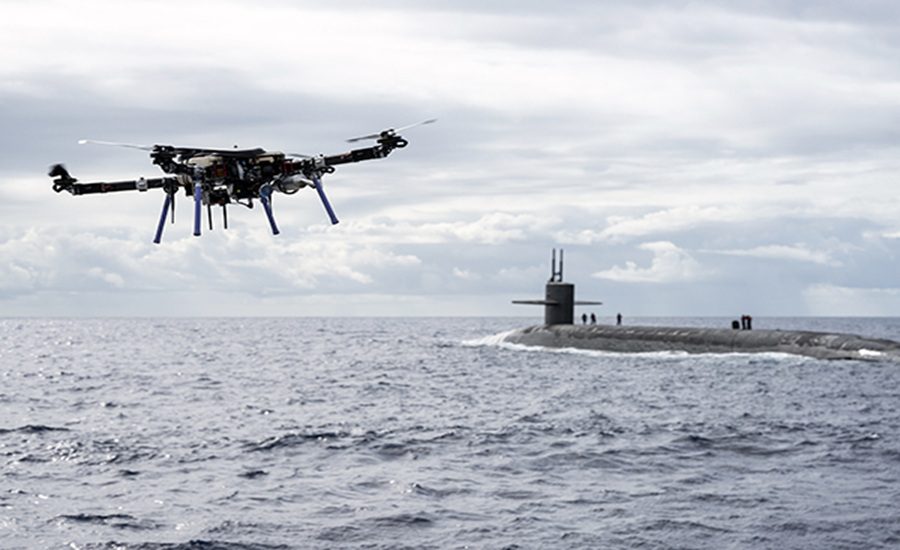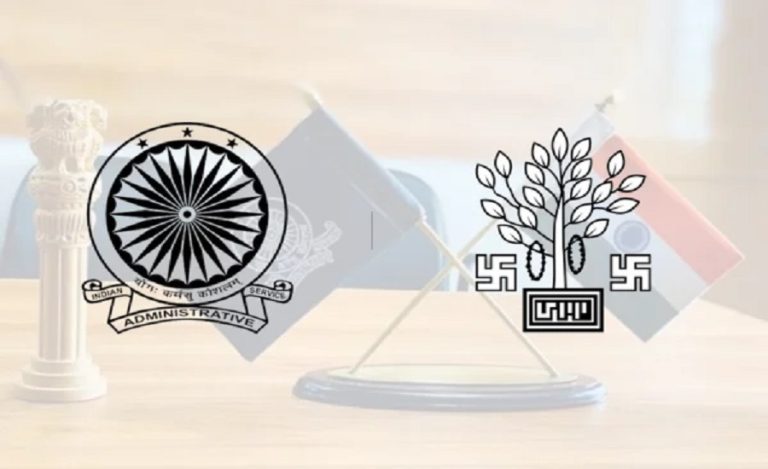Bangalore/ New Delhi: The Indian Navy has taken a bold leap into next-generation naval air power by selecting Bengaluru-based startup NewSpace Research & Technologies (NRT) to develop the stealth-inspired drone Abhimanyu as the basis for its Naval Collaborative Combat Air Vehicle (N-CCAV) programme. The initiative marks a significant shift towards indigenous, cost-effective unmanned systems designed to operate in tandem with carrier-based fighters such as the MiG‑29K and forthcoming Rafale‑M jets.
Background of the Abhimanyu Stealth Drone
In an era where manned-unmanned teaming (MUM-T) is emerging as the future of air combat, the Indian Navy initiated the N-CCAV programme to develop a loyal wingman drone capable of flying alongside human-piloted aircraft.
According to industry sources, NRT’s Abhimanyu was selected through the iDEX (Innovations for Defence Excellence) initiative under the Ministry of Defence, which aims to harness private-sector innovation for defence applications.
The Abhimanyu drone, displayed in model form at the Aero India 2025 exhibition in Bengaluru, signals India’s drive to field carrier-compatible unmanned combat aircraft.
Design & Capabilities of Abhimanyu Stealth Drone
Stealth-Inspired Design: Though not a full stealth aircraft, Abhimanyu incorporates several low radar cross-section (RCS) features: swept wings, horizontal stabilisers, a single vertical tail, twin narrow intakes on the rear fuselage and a continuous chine-line wrapping the fuselage. These features contribute to reduced radar signature while keeping production cost-effective.
Performance Specifications: Reported performance figures for Abhimanyu include:
- Top speed: approximately 300 knots (~550 km/h)
- Operational range: ~1,000 km
- Service ceiling: ~19,700 ft (~6,000 m)
- Endurance: up to 20 hours in certain sources
Multi-Role & Modular Architecture: The drone is designed for multiple mission roles: Intelligence, Surveillance & Reconnaissance (ISR); electronic warfare (EW); air-to-air and air-to-ground strike; swarming operations and more. Its modular architecture enables configurable payloads and rapid adaptation for evolving demands.
Operational Role & Strategic Vision of Abhimanyu Stealth Drone
The N-CCAV programme envisages Abhimanyu flying in manned-unmanned teaming (MUM-T) alignment with Indian Navy fighters, acting as a force-multiplier.
It will extend sensor reach, help protect human pilots by undertaking higher-risk missions, and shape a future carrier air wing that blends human and robotic platforms.
The Navy has committed to a minimum purchase quantity once the system attains operational readiness, underscoring the strategic importance placed on the project.
Strategic Implications of Abhimanyu Stealth Drone
Indigenous defence push: Abhimanyu underscores India’s ambition to move from buyer to builder, particularly in cutting-edge air technologies.
Force-multiplication in carrier warfare: For carrier-based operations of the Indian Navy, the drone adds new layers of flexibility, allowing more assets to cover more threats with fewer human pilots.
Cost-effectiveness and mass deployment: The modular and potentially expendable design philosophy enables deployment in numbers, making it meaningful even if each individual drone is not as high-end as foreign counterparts.
Future warfare readiness: With rising regional maritime challenges, integrating unmanned platforms into carrier air wings will elevate operational readiness in high-threat zones.
Development Status & Next Steps
The Abhimanyu programme is still under development, with NRT working through design, prototyping and validation phases. Funding is partially through iDEX and internal R&D investment. The timeline suggests prototypes and initial flights may be expected in coming years, possibly around 2026 for initial operational capability.
Comparison of Abhimanyu Stealth Drone With Other Systems
Compared to the larger twin-engine loyal wingman drone being developed by Hindustan Aeronautics Limited (HAL) under the CATS-Warrior programme (for the Indian Air Force), Abhimanyu is smaller, simpler and optimised for naval operations — emphasising rapid production and cost-effectiveness over full stealth and supersonic speeds.
Challenges Ahead
Carrier-compatibility: Ensuring safe catapult launch, arrested recovery (or alternative recovery) from carriers is technically demanding.
MUM-T integration: Seamless manned-unmanned teaming requires robust data-links, AI/ML autonomy, sensors and tie-in with existing naval systems.
Production & lifecycle costs: Keeping unit cost low while maintaining capability will determine how many units can be deployed.
Operational doctrine & training: Pilots and controllers must adapt to new operating paradigms.
Competition & timeline risks: Other nations are also advancing loyal wingman drones, so staying on schedule is important.




























